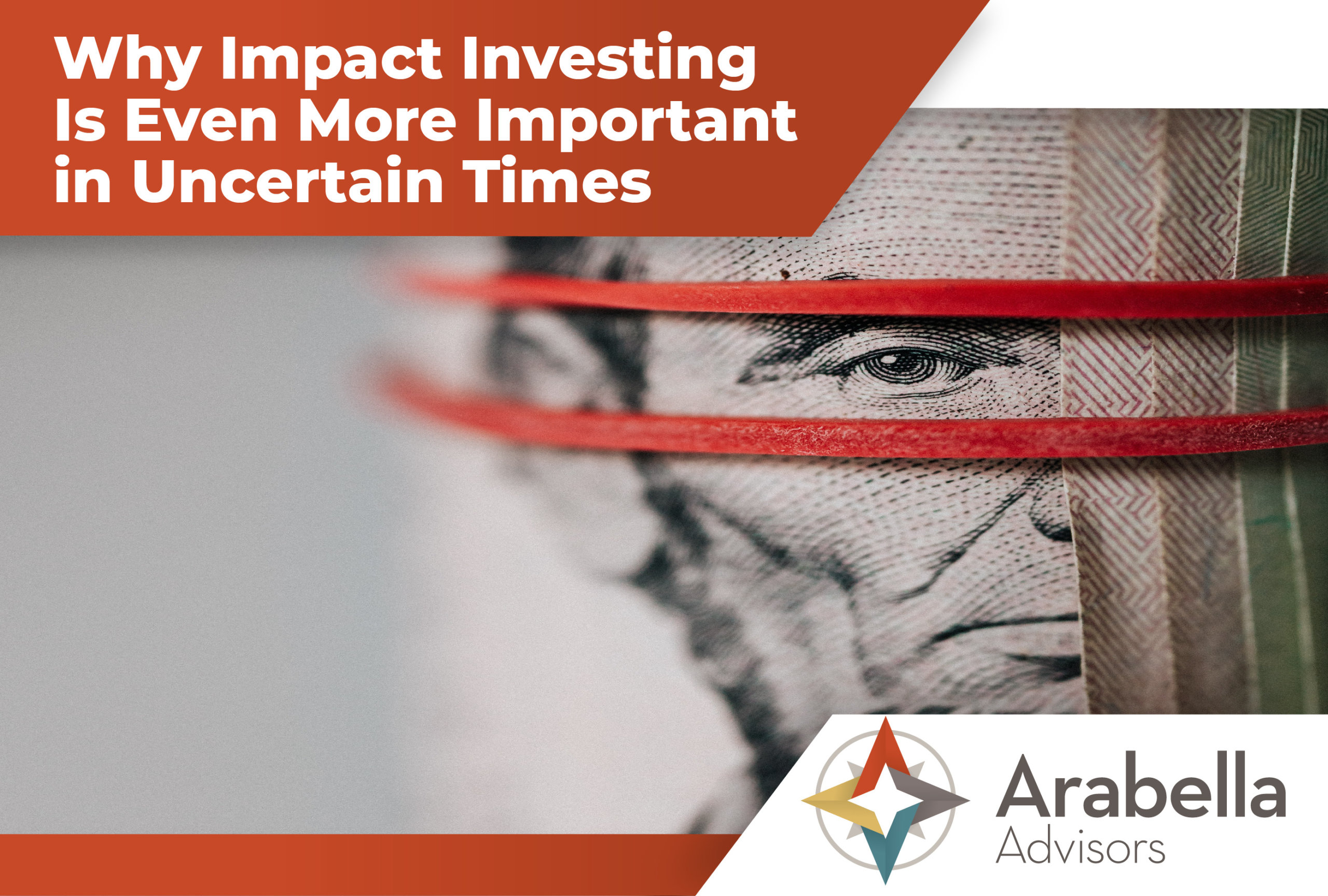Why Impact Investing Is Even More Important in Uncertain Times

Nobody knows when the next recession will arrive or how bad it will be. But there are plenty of signals that experts point to that can make investors cautious or nervous. Regardless of when the next economic downturn does arrive, foundations and nonprofit asset owners¹ can—and should—play a crucial role. Both own a unique position in capital markets where they can use the social mandate of their organization and asset base to protect/defend industries and ideas that may otherwise succumb to exogenous shocks like recessions or economic downturns. We saw this play out in 2020 when, amid incredible global uncertainty, those across the United States began a long-overdue process of racial equity work and awareness. Part of that process included significant commitments by foundations to support businesses run by people of color or that support a narrowing of the racial wealth gap. While that work is ongoing, this too is an opportunity for foundations to take a leadership position at a crucial time.
The effects of a recession
Directional changes to economic and financial growth are, by definition, inflection points that will bring about shifts in consumer activity and market conditions. And when the economy enters a recession or challenging period, we see a cascade of impacts. Companies will shut down. Capital markets will tighten. Liquidity will dry up. These are scary events, but crucial to a functioning free market system. These changes in economic conditions are supposed to allow weaker companies to shutter and stronger operations to survive and thrive. A sort of corporate natural selection process. But we all know that our system is not perfect and certainly does not always align with social and environmental goals.
These economic shocks impact companies in two critical ways.
- Businesses will lose customers and clients, meaning revenue and profits will fall
- Funding from institutional investors dries up, making investment capital used for growth more scarce
Together, these mean that the creation of new and growth of young businesses will face significant pressure. And when those young companies are working to make our economy and society more equitable and sustainable – these are not set backs that our society and planet can afford.
The unique role of foundations and nonprofit asset owners
Foundations can’t replace slowing customer demand to support sales. But foundations can support a company’s capital needs. Remember that companies raise money from investors to support operations and growth and to continue to invest in their company until sales are so large that those cash flows can help the company grow. Foundations need to lean into this role when other funders retreat to provide capital to companies building products and services that reflect the products and services all communities need to thrive. But it is important for that role to escape the theoretical and land in the explicit and actionable. Foundations should call out this role in formal strategies. Codify it in the board minutes. State clearly that the foundation will look for opportunities to step in and fund and support business that are working to shape our society for the better. A great example of this was when a group of investors including the Cal Endowment, JP Morgan Chase, and Richard W Goldman Family Foundation among others all committed to Capital Impact Partners’ COVID Response Fund for Community Health Centers in California. These investors recognized uncertainty that threatened a critical need and stepped up to support health centers in California.
We sometimes see in times of uncertainty, foundations reverting to what is known and familiar and shy away from investment strategies that appear or feel new or unproven – like impact investing. This is indeed what most investors do. But foundations are not most investors and have mandates to act in a certain way. Impact investing has now been around for long enough that there is quantifiable evidence to support its use.
- The International Finance Corporation (the private sector arm of the World Bank Group) shared a study that its private equity investments outperformed the S&P 500 by 15 percent.
- A study from the University of California calculated that the median impact-focused private equity fund trailed impact-agnostic funds by only 1 percent.
- A study published by Cambridge Associates showed that smaller funds (below $100MM of AUM) outperform larger funds by over 2.5 percent, making the case for smaller and more nimble impact funds².
These data are just a few of many that show that impact funds across public, private, debt, and equity have earned a place in a foundation’s portfolio. There is now enough research by highly credible academics and asset managers to demonstrate the efficacy of these funds.
If foundations are serious about fulfilling their social and environmental mandates, they should get serious about using the full strength of their asset base to help support businesses shaping the economy of the future.
Footnotes:
- Throughout this blog I will refer to this overall grouping as “foundations” for brevity, but readers should note that this includes all nonprofit asset owners (e.g., endowments).
- https://thegiin.org/research/publication/impact-investing-decision-making-insights-on-financial-performance/
